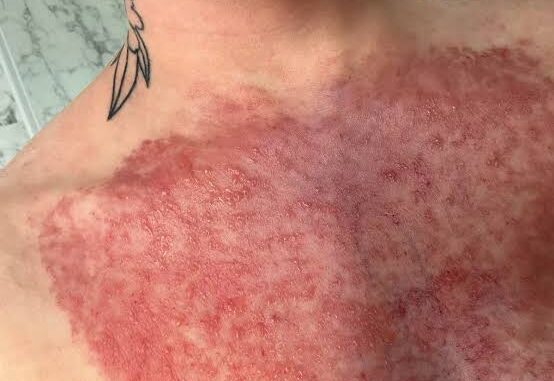
**Tragic Consequences: Numbing Creams Linked to Fatal Reactions in Florida**
In a shocking series of incidents in Florida, numbing creams—often used in various cosmetic and medical procedures—have been linked to fatal reactions, with some clients reportedly dying shortly after application. Numbing creams are widely used to reduce pain and discomfort during procedures like tattoos, cosmetic treatments, and minor surgeries. However, in rare cases, these topical anesthetics can lead to severe complications, with potentially deadly consequences. The recent fatalities have raised significant concerns about the safety of these creams and have led to closer scrutiny of their use, ingredients, and potential side effects.
### What Are Numbing Creams?
Numbing creams are topical anesthetics designed to reduce pain by desensitizing nerve endings on the skin’s surface. Commonly used ingredients include lidocaine, prilocaine, and benzocaine. These compounds block nerve signals in the body, effectively dulling sensations in the treated area. They are generally applied to the skin before procedures to minimize pain and discomfort, and they’re used in a variety of settings, from tattoo parlors and spas to medical offices.
While numbing creams are generally considered safe when used properly, the risks increase when applied in large quantities or on sensitive areas. In addition, reactions can vary greatly among individuals, with certain people more susceptible to adverse effects than others. This variability can make it difficult to predict who may experience a serious reaction, adding an element of unpredictability to their use.
### Potential Side Effects of Numbing Creams
Most numbing creams list mild side effects, such as temporary redness, itching, or minor swelling at the application site. These reactions are common and typically resolve on their own. However, more severe side effects are possible, especially if the cream is misapplied or if the client has an underlying health condition. Some of the more serious risks associated with numbing creams include:
1. **Allergic Reactions**: Ingredients in numbing creams can trigger allergic reactions in some individuals. Symptoms can range from hives and itching to more severe reactions like difficulty breathing and anaphylaxis. For some, an allergic reaction can occur suddenly and escalate rapidly, particularly if the cream is applied over a large area of the skin.
2. **Systemic Toxicity**: When numbing creams are applied in high concentrations or over large areas, the active ingredients can be absorbed into the bloodstream. This can lead to systemic toxicity, also known as “overdose” of the numbing agent. Symptoms of systemic toxicity include dizziness, confusion, seizures, irregular heartbeat, and, in extreme cases, cardiac arrest. This can be especially dangerous in cases where multiple layers of cream are applied, intensifying absorption.
3. **Methemoglobinemia**: Some numbing agents, particularly those containing benzocaine, can lead to a condition called methemoglobinemia. This condition reduces the blood’s ability to carry oxygen, causing symptoms like blue-tinged skin, fatigue, shortness of breath, and, if left untreated, death. People with this condition often appear pale or bluish in the hours after exposure, and the effects can progress rapidly without medical intervention.
4. **Respiratory and Cardiovascular Issues**: Some individuals may experience difficulty breathing or other respiratory issues following the application of numbing creams. This can be especially dangerous for individuals with pre-existing respiratory or cardiovascular conditions. In certain tragic cases, individuals have gone into respiratory distress or suffered sudden cardiac arrest, particularly if a large amount of cream was applied or if it was used without a medical professional’s supervision.
5. **Central Nervous System Reactions**: Over-absorption of anesthetics into the bloodstream can affect the central nervous system, leading to symptoms such as tremors, confusion, convulsions, or seizures. For individuals with conditions like epilepsy, the risk of triggering a severe response may be heightened.
### Why Do These Fatal Reactions Occur?
Several factors can contribute to fatal reactions from numbing creams. One of the most significant risks is **overuse**. Some clients or practitioners may mistakenly apply too much cream, or apply multiple layers, assuming it will increase effectiveness. However, this approach can lead to dangerous levels of anesthetic entering the bloodstream. Similarly, applying numbing cream over a large area or on broken skin, which can happen in some cosmetic treatments, increases the risk of toxicity.
Another contributing factor is **lack of medical oversight**. Numbing creams are often used in non-medical settings, like tattoo studios or spas, where staff may not have the medical training to recognize symptoms of toxicity or adverse reactions. In some cases, clients may even bring their own numbing cream, making it difficult for the staff to monitor the dosage or ingredients accurately.
Additionally, certain individuals are at higher risk of adverse reactions due to **underlying health conditions**. People with cardiovascular issues, respiratory problems, or metabolic disorders may be more sensitive to numbing agents. Unfortunately, these conditions are not always disclosed or identified before the cream is applied.
### Legal and Medical Responses
The recent fatalities have led to increased calls for regulation and oversight. Some consumer advocates argue that numbing creams should only be available by prescription or under direct medical supervision, particularly for high-potency formulas. Currently, many numbing creams can be purchased over the counter, with few restrictions on how they are used. This lack of regulation can lead to misuse and increases the risk of harm.
Medical professionals are also advising caution and recommending that numbing creams only be applied by trained professionals who understand the risks. In a clinical setting, practitioners are better equipped to recognize and address symptoms of toxicity, whereas those without medical training may overlook these signs.
Several health organizations are advocating for greater public awareness about the potential dangers of numbing creams. Educational campaigns could inform consumers about safe usage practices, including the risks of overuse, signs of allergic reactions, and the importance of consulting a professional before applying the cream for non-medical procedures.
### How to Safely Use Numbing Creams
For individuals considering the use of numbing creams, there are several steps to minimize risk:
1. **Use Only as Directed**: Always follow the instructions on the package. Avoid applying the cream in large amounts or over extensive areas of the skin.
2. **Consult a Professional**: If possible, consult with a medical professional before using a numbing cream, particularly if you have any pre-existing health conditions. A professional can recommend a safe dosage and monitor for potential adverse reactions.
3. **Patch Test**: Perform a patch test before full application to check for any allergic reactions. Apply a small amount on a less sensitive area of the skin and wait to see if any reaction occurs.
4. **Monitor Symptoms**: Be vigilant about any unusual symptoms, such as dizziness, confusion, or trouble breathing. If any of these symptoms appear, seek medical attention immediately.
5. **Avoid Broken Skin**: Do not apply numbing creams to areas where the skin is broken, as this can accelerate absorption and increase the risk of toxicity.
### Final Thoughts
The recent fatalities in Florida serve as a tragic reminder of the potential dangers associated with numbing creams. Although these products are widely used and generally considered safe when applied correctly, misuse or overuse can have deadly consequences. As more awareness spreads about these risks, it is essential for both clients and practitioners to exercise caution, follow proper usage guidelines, and remain aware of the signs of adverse reactions.
In an industry where comfort and pain management are often priorities, numbing creams will likely remain in demand. However, the latest incidents underscore the importance of using these products responsibly and with respect for the potential risks they carry.



Be the first to comment